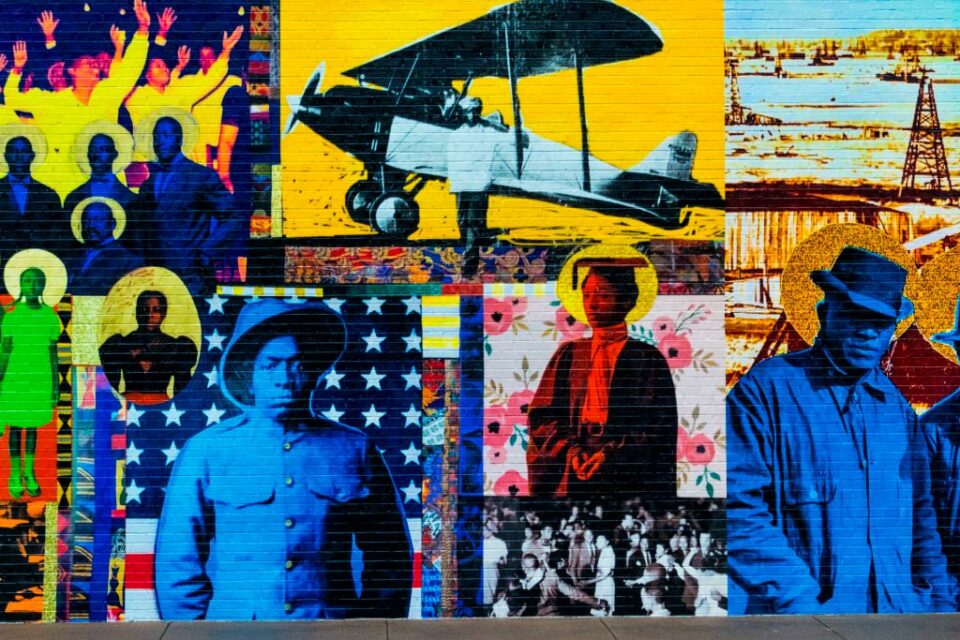
October 1, 2024
DOJ To Finally Review 1921 Bombing Of Tulsa Under Emmett Till Civil Rights Act
The DOJ’s Civil Rights Division Cold Case Unit will be investigating the massacre under the Emmett Till Unsolved Civil Rights Crime Act, which allows the Justice Department to investigate crimes that happened on or before Dec. 31, 1979.
The Department of Justice will be investigating the 1921 Tulsa Race Massacre for the first time. The DOJ’s Civil Rights Division Cold Case Unit will be investigating the massacre under the Emmett Till Unsolved Civil Rights Crime Act, which allows the Justice Department to investigate crimes that happened on or before Dec. 31, 1979.
According to The New York Times, Damario Solomon-Simmons, the lead attorney who represents the last living survivors of the massacre, 109-year-old Lessie Benningfield Randle and 110-year-old Viola Ford Fletcher, said that accountability for the massacre is long overdue.
“We feel very, very strongly that if you cannot recognize what happened to Mother Fletcher and Mother Randle as children, then no one is safe in America,” Solomon-Simmons told the outlet. “If you can be bombed and no one investigates it or holds anyone accountable, then none of us are safe.”
On Sept. 30, Assistant Attorney General Kristen Clarke addressed the investigation at a convening of the DOJ’s Civil Rights Division Cold Case Unit.
“I want to tell you about a review and evaluation that the Civil Rights Division’s Cold Case Unit is undertaking of the Tulsa Race Massacre, one of the deadliest episodes of mass racial violence in this nation’s history. On May 31 and June 1, 1921, a white mob attacked a then thriving Black community: the Greenwood district of Tulsa, Oklahoma, sometimes referred to as the ‘Black Wall Street.’ When our review and evaluation conclude, we will issue a public report detailing our findings and conclusions pursuant to the Emmett Till Cold Case Act.”
Clarke continued, telling the story of what led to the massacre.
“The immediate catalyst for the riot was, as with Emmett Till’s murder, the claim that a Black youth had inappropriately engaged with a white woman. The young man, Dick Rowland, was arrested. White men went to the jail to demand that he be released to face mob justice. Members of the Black community assembled at the courthouse to try to prevent a lynching. An altercation broke out. In response, a white mob invaded Greenwood. The mob burned more than 35 square blocks of the community, destroying businesses and homes and killing hundreds of Black men, women, and children, although the exact toll remains uncertain. Some suspect that the aim of the white mob was, all along, to appropriate the wealth of the Black community and that the allegations against Mr. Rowland were merely an excuse.“
Nearly a century after the events of the massacre, Randle and Fletcher filed a lawsuit against the City of Tulsa and additional government agencies, but the lawsuit was only filed under Oklahoma state laws and not federal laws, which meant that the decision of the Oklahoma Supreme Court to refuse to reconsider to dismiss the lawsuit the pair brought was final.
According to The Washington Post, following the dismissal by the Oklahoma Supreme Court, Randle and Fletcher issued a statement, critical of the lack of justice they received from the justice system and the federal government.
“It seems that the only ‘justice’ permitted for Black Americans are sympathetic words and supposed promises that white Americans, our government, and our justice system will ‘do better,’” their statement said. “But the lip-service continues, and tangible justice is consistently denied.”
Solomon-Simmons kept pushing for a federal review, eventually landing a meeting with President Joe Biden and Vice President Kamala Harris. It is his hope that the federal government’s investigation can help bridge gaps in the public’s knowledge of the massacre.
“We want to know more about the massacre. We only know about 10 percent of what actually happened and who actually participated,” Solomon-Simmons told The New York Times, “we hope the federal government can help fill in some of those gaps.”
RELATED CONTENT: No Justice! Oklahoma Supreme Court Dismisses Tulsa Race Massacre Lawsuit